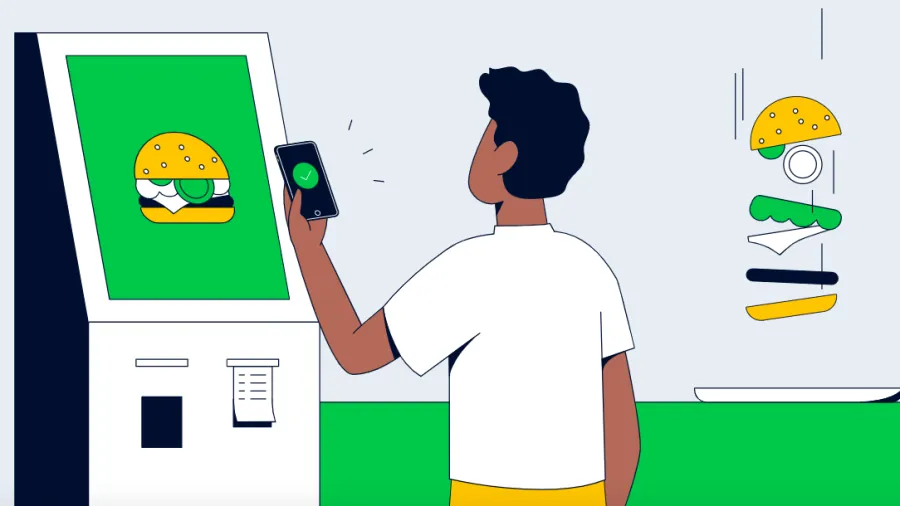
How adding new payment methods helps QSRs retain and gain customers
With the increasing number of ways to pay for goods and services, it is also becoming more difficult for Australian QSRs to keep up with all of the emerging payment methods. Business owners must adapt quickly as today’s customers expect to be able to pay in any way they please.
According to a report by the Reserve Bank of Australia (RBA), Australians made an average of 560 electronic transactions in 2019/2020, compared to 250 transactions ten years before. The use of cash, on the other hand, fell to 170 transactions per customer in comparison to 320 per person in 2007.1
COVID-19 accelerated the shift from cash to electronic payments as customers prioritised their health and safety. Latest figures from the Commonwealth Bank of Australia show that between March 2020 and March 2021, digital and contactless wallet transactions increased almost two-fold from 36 million to 60 million.2
Meanwhile, buy now, pay later (BNPL) platforms have gained huge followings with flexible payment terms for both small and big purchases. RBA reveals that the value of BNPL transactions jumped 55% in 2019/20 and more than tripled since 2016/17.3
Consumers aged 40 and under account for more than half of the demand for contactless payments and BNPL, and QSRs wishing to capture this growing market would do well to double down on these alternative payment methods and other emerging payment technologies to stay ahead of the competition.
Ever changing payment demands for QSRs
Over the past year, digital and contactless solutions have become ingrained in consumer purchasing behaviours across Australia, and mobile has been a key touchpoint in the customer journey.
Customers are opting for alternative ways to pay for their much-loved meals, as restaurants increasingly offer only drive-thru, delivery, kiosk, and takeaway services. When dining in, customers now have “pay-at-table” and “pay-at-bar” options, allowing them to pay via handheld mobile point-of-sale (mPOS) devices without having to go to the counter. Customers have also become accustomed to scanning QR codes to view menus, order, and pay with their smartphones.
A real opportunity exists for QSRs to leverage these technologies to offer more seamless payment experiences for customers. In fact, the 2020 Adyen Agility Report reported that 38% of customers like to have a range of payment options available to them, and 55% will go out of their way to visit stores that make it easy for them to pay.
Apart from providing a range of payment options, it is also crucial for QSR brands to ensure that customers who use contactless technologies need not worry about security. With tokenisation, or the method of replacing sensitive card details with a distinct string of numbers per transaction, QSRs ensure secure and seamless transactions, resulting in repeat purchases from customers.
Strategy: A payments partner that can keep up with customers' demands
Providing a swathe of payment options allows QSRs to satisfy their customers and keep them coming back, thereby unlocking a huge, long-term growth and revenue potential—just a 5% increase in customer retention rates results in as much as 95% growth in profits.4
With rapid changes and evolving customer demands, it is important for brands to partner with a payment provider who can help them navigate the new normal for QSRs, which is managing a suite of payment options, and drive revenues amidst challenging conditions.
Adyen, with its modern payments infrastructure, has been a well-known partner of QSRs in Australia and beyond such as McDonald’s, Subway, Hungry Jack’s, Domino’s, and Guzman y Gomez, to name a few.
"Adyen helps restaurants stay competitive with different types of payment options. New technologies make it possible to offer customers something unique that wasn’t available previously, ultimately to deliver a better and more secure customer experience. Adyen helps businesses to connect and transact in their customers’ preferred ways," said Hayley Fisher, Country Manager AUNZ, Adyen.
Ultimately, providing a range of payment methods preferred by the customers works to the advantage of the restaurant as well. A connected and digitised payments system, also called unified commerce, helps recognise customers across channels, gather useful and actionable insights about them, and make better decisions that improve their overall experience.
Get in touch with the Adyen team to learn more about the payment solutions that can help you provide amazing experiences to your customers.
------------------------
4 https://hbr.org/2014/10/the-value-of-keeping-the-right-customers


























